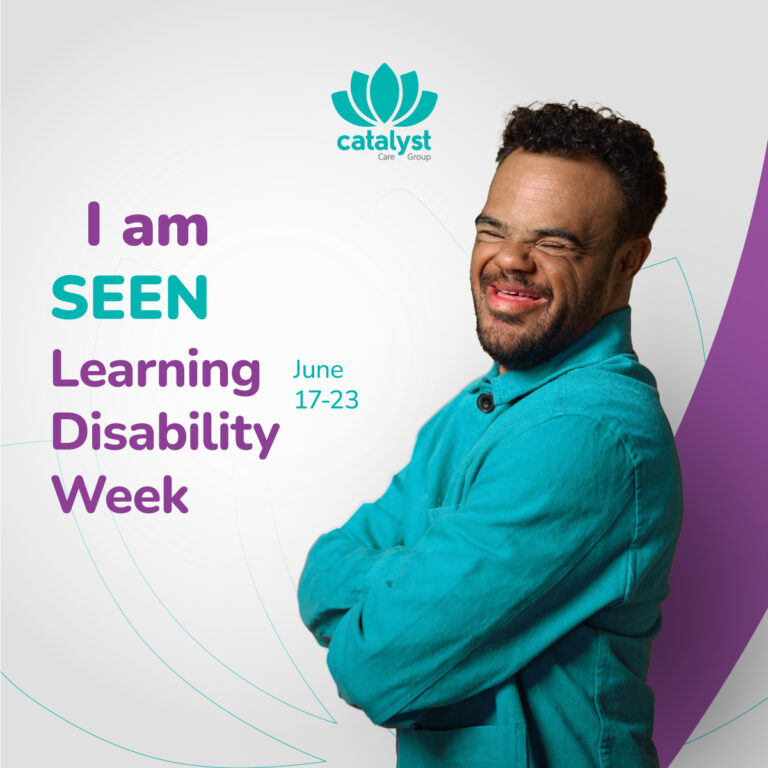What is anxiety?
It’s when you feel your body trembling, and heart racing yet for no obvious reason. It’s when a simple change in plans fills your body with distress. It’s when being in a room full of people makes you feel overwhelmed, scared and ready to run. It’s when getting too much or too little attention makes you feel upset, distressed and overwhelmed.
We’ve all been there. But what about the people who feel, perceive and experience the world more intensely than the most of us? These emotions are then multiplied. While anxiety can happen to anyone, 50% of autistic people experience anxiety disorder appearing from an early age and often continuing into adulthood.
Looking for personalised autism support at home? Contact a professional
The Link Between Autism and Anxiety
Why might autistic people experience anxiety?
Anxiety is more frequently experienced by autistic children and adults compared to non-autistic people. More than half of autistic adults are likely to be diagnosed with an anxiety disorder at some point, and many others live with strong feelings of anxiety that influence their everyday life.
Anxiety can look different for everyone, but certain challenges may contribute to anxiety for autistic people, such as:
- Unpredictable changes: Sudden shifts in routine or lack of structure can be difficult to manage.
- Sensory sensitivities: Environments with bright lights, strong smells, or lots of noise can feel overwhelming.
- Communication challenges: Differences in how autistic and non-autistic people communicate can lead to social anxiety, especially when someone feels the need to hide or ‘mask’ their autism.
- Struggling to recognise or understand emotions – a difficulty known as alexithymia.
- Situational anxieties, like distress in crowded places.
When feeling anxious, autistic people might:
- Frequently seek reassurance
- Avoid certain places or activities, such as school
- Experience meltdowns in response to overwhelming stress
- Overthink or become mentally ‘stuck’ on certain thoughts
- Engage in repetitive actions like rocking, flapping, or other stimming
- Fixate on routines or specific activities
- Run away from stressful situations
- In some cases, engage in self-harming behaviours
Guide on the Autism Act 2009 for Commissioners
Enter your details below and we’ll send your free copy straight to your inbox.
Signs of Anxiety in Autistic Adults
In autistic adults, anxiety can appear through a range of physical and behavioural signs and is often closely linked with autistic characteristics. Some common indicators include social anxiety, repetitive actions, pulling away from others, and struggling with changes or transitions.
More specifically, anxiety symptoms may often include:
Physical Signs
- Fast heart rate and rapid breathing – Common bodily responses to stress.
- Muscle tension – Can lead to ongoing aches or physical discomfort.
- Stomach pain and headaches – Anxiety can often be felt physically.
- Sleep difficulties – Trouble falling asleep or staying asleep is common.
Behavioural Signs
- Social anxiety – Intense fear or worry around social situations, which can lead to avoidance.
- Stimming or repetitive behaviours – While stimming is part of how many autistic people self-regulate, it may increase during anxiety.
- Withdrawal – Pulling away from social contact or preferred activities when feeling overwhelmed.
- Struggling with change – Transitions or unexpected changes in routine can trigger anxiety.
- Stronger need for routines – Familiar patterns can offer comfort, and anxiety may heighten the need for predictability.
- Obsessive thinking or rumination – Replaying worries or getting stuck on negative thoughts.
- Emotional overload – This might result in meltdowns (intense reactions) or shutdowns (withdrawing and going quiet).
- Self-harm – In some situations, anxiety may lead to harmful coping strategies.
- Fixation on control or repetition – Such as asking the same question repeatedly or insisting on specific routines.
Things to Keep in Mind
- Masking – Many autistic people hide signs of anxiety, which can make it harder to recognise.
- Overlap with autistic traits – Some behaviours linked to anxiety are also part of autism, making it challenging to untangle one from the other.
- Severity and impact – Anxiety may vary in how intense it feels and how much it disrupts daily life, from occasional discomfort to significant distress.
Recognising Triggers
Anxiety in autistic person can be triggered by a range of internal and external factors, often linked to how they experience the world. Common triggers include:
- Sudden changes – Unexpected shifts in routine or environment.
- Sensory overload – Bright lights, loud noises, strong smells, or crowded spaces.
- Social demands – Pressure to interact or communicate in ways that feel uncomfortable.
- Masking – Hiding autistic traits to fit in, which can be exhausting over time.
- Uncertainty – Not knowing what to expect or how to prepare.
- Misunderstandings – Communication breakdowns that lead to confusion or frustration.
- Co-occurring mental health conditions – Such as:Generalised anxietyObsessive Compulsive Disorder (OCD) Post-Traumatic Stress Disorder (PTSD) Depression or low mood
Recognising these triggers helps tailor support and reduce unnecessary stress in everyday life.

Sensory Overload and Anxiety
For many autistic people, sensory experiences can feel more intense or overwhelming. Everyday environments-like a noisy classroom, flickering fluorescent lights, or the strong scent of cleaning products-can quickly become distressing. When the brain receives too much sensory input at once, it can lead to sensory overload, a state where it becomes difficult to process or respond calmly to what’s happening.
This overload often links directly to anxiety. The anticipation of overwhelming environments or the fear of not being able to escape them can create ongoing stress. In some cases, it may lead to shutdowns, meltdowns, or a strong need to withdraw and self-regulate. Recognising sensory triggers and creating spaces that feel safe and manageable can make a real difference in reducing anxiety for autistic people.
Strategies for Managing Anxiety
Managing anxiety in autistic people involves a combination of practical adjustments, self-awareness, and personalised support. Since anxiety is often closely linked with sensory processing, routine, and social demands, addressing these areas can reduce distress and improve the quality of life. The most important thing, however, is to provide true understanding, compassion and empathy to the person, and support them in developing positive coping strategies.
Creating a Sensory-Friendly Environment
Many autistic people experience sensory differences, including sounds might feel sharper, lights too bright, fabrics uncomfortable, or smells overpowering. These sensations aren’t just minor irritations—they can feel intense and all-consuming. When sensory input becomes too much, it can tip someone into anxiety very quickly.
That’s why creating an environment that feels manageable is so important. It could mean using softer lighting, keeping noise levels low, or offering quiet places to retreat. For some, a weighted blanket, a favourite texture, or just knowing they won’t be rushed can bring comfort. These aren’t luxuries – they’re everyday ways of helping someone feel calm, respected, and more in control.
Developing Self-Regulation Techniques
Managing emotions isn’t always easy, especially when the world feels unpredictable or overwhelming. For autistic people, it can take time to recognise what anxiety feels like in the body, let alone know what to do with it. That’s why self-regulation is about more than just “calming down” – it’s about learning how to feel safe again.
Some people find breathing exercises helpful. Others need to move, stim, or curl up with a familiar object. Drawing, listening to music, or spending time alone can also help. It’s not one-size-fits-all. What matters is helping each person find what works for them – and knowing that it’s okay to need support in the moment. The goal isn’t to stop certain behaviours, but to make space for ways of coping that actually feel useful.
Lifestyle Changes
Sometimes, the small things – like getting enough rest, eating well, or moving your body—make a big difference in how we handle anxiety. But for autistic people, those small things can be difficult too. Sleep can be disrupted by sensory sensitivities. Mealtimes might bring challenges around food textures. Even finding a moment of quiet in a busy day can feel impossible.
That’s why routines that support well-being need to be shaped around what feels safe and manageable for each person. This might include regular breaks, time spent on special interests, gentle exercise, or just a bit of space to decompress. It’s not about fixing everything – it’s about making life feel a bit lighter, with room to breathe.
Professional Support and Therapeutic Approaches
Anxiety can sometimes feel like it takes over everything. When that happens, outside support can make a real difference – especially when it’s tailored to how someone communicates, processes emotions, and experiences the world. Working with someone who understands autism can help turn therapy into a space that feels accessible and useful, not overwhelming.
Cognitive Behavioural Therapy (CBT) is often used to treat anxiety, but it needs to make sense to the person receiving it. That might mean using visuals, simplifying language, focusing on specific behaviours rather than abstract thoughts, or allowing extra time to process. The aim is not to change who someone is, but to help them make sense of what they’re feeling and develop tools that genuinely help.
Multimedia tools and social stories have shown remarkable results in supporting better communication and easing anxiety in autistic adults and children. It is an innovative and intentional approach enabling people better connect with the caregivers and the outer world and prevent unpredictability that could trigger anxiety.
Occupational therapy focused on sensory needs– can also be helpful. But what really matters is feeling heard, respected, and supported to move at your own pace. Anxiety doesn’t disappear overnight, but with the right support, it can become something that’s easier to live with – not something that controls your life.
Assistive technology can support autistic people in managing anxiety by making communication and daily routines more predictable and easier to understand. Visual aids, such as schedules, symbols, or step-by-step guides, help reduce uncertainty and provide structure. PECS (Picture Exchange Communication System) offers a visual way to express needs, which can lower frustration and anxiety, especially in situations where verbal communication is challenging.
Digital avatars and interactive multimedia tools can model social scenarios or explain upcoming events in a clear, engaging way. These tools, when personalised, help create a calmer, more manageable environment by reducing ambiguity and supporting emotional regulation.
How to Manage Anxiety in Autistic Person?
Managing anxiety in an autistic person means noticing the early signs, understanding their unique needs, and responding in ways that feel safe and respectful. Panic attacks, for example, can be overwhelming-both for the person experiencing them and those around them.
Gentle reassurance, helping them find a calm space, and avoiding demands in the moment can help ease the intensity. Many autistic people also benefit from having access to grounding tools: something familiar to hold, a quiet corner, or a predictable routine that brings comfort.
Social situations can also be a major source of anxiety. Reducing pressure, offering clear explanations, and allowing time to prepare can make a difference. Most importantly, support should focus on helping the person manage their feelings-not hide them.
Anxiety isn’t just about stress; it’s often about a mismatch between the person and their environment. Creating spaces where someone feels accepted and in control is one of the most effective ways to reduce anxiety in the long term.
The Role of Caregivers and Tailored Support
Caregivers-whether parents, family members, or support staff-play a central role in helping autistic people navigate anxiety. That support goes beyond offering comfort during difficult moments. It also means noticing patterns, making adaptations, and advocating for the right kind of help. This might involve building flexible routines, reducing sensory triggers at home, or speaking with schools and services about what’s needed to prevent overwhelm.
Tailored support means recognising that no two people are the same. What works for one person might not for another. That’s why ongoing communication, consistency, and a willingness to listen are so important. Mental health services that support both autism and anxiety can provide valuable insights and guidance. When families and professionals work together, it’s possible to build a support system that doesn’t just reduce anxiety but also strengthens confidence and emotional safety.
Autism Support with Catalyst Care Group
At Catalyst Care Group, our approach to autism support is centred on understanding each person’s needs, challenges and unique strengths. We offer personalised care that’s combined with creative and forward-thinking methods to make a genuine, lasting difference. To support clear and accessible communication, we use multimedia tools and various techniques that adapt to how each person understands information. This includes the use of video avatars, social stories, and interactive digital resources that help ease anxiety and support communication in ways that feel right for each person.
We take a trauma-informed approach to care, recognising how past experiences can shape a person’s behaviour and emotional wellbeing. Every aspect of our support is built on creating safety, trust, and a sense of control, always seeing the person beyond a diagnosis.
As a certified PROACT-SCIPr-UK® training centre, we equip our teams to provide thoughtful, proactive support that respects each person’s choices, needs, and rights. Our training and day-to-day practice focus on:
- Identifying and minimising triggers through emotional and sensory awareness
- Using personalised strategies that are as non-restrictive as possible
- Helping people build everyday skills and confidence in communication
- Strengthening emotional resilience through trauma-sensitive approaches
We work alongside people, their families, and professionals to create support plans that reflect what truly matters to them-their values, goals, and future hopes.
To learn more about how Catalyst Care Group can support autistic people through compassionate, expert care and innovative tools, get in touch with us today.













